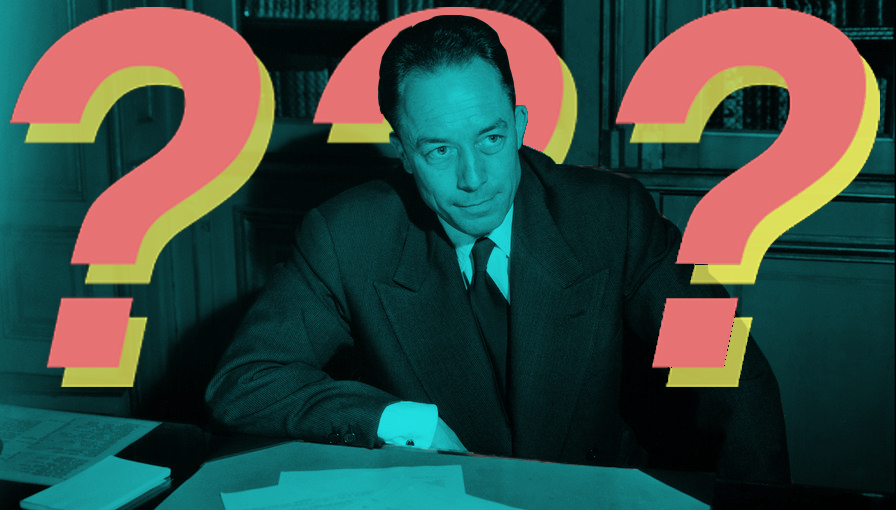Saṃvega: The urgent realization that you need a more meaningful life

- Saṃvega is a Buddhist term for a general sense of existential dissatisfaction with the world — the feeling that life is meaningless and you’re missing out on something deeper.
- Saṃvega pops up across almost all philosophical literature and goes by many names. It is alienation for Marx, alienation for Camus, and angst for the existentialists.
- Because saṃvega is common to many traditions, it is no surprise there are a great many solutions to it (called pasadas). Here we look at four categories of solutions.
Carlos comes back from work and it’s late — so late that as he pulls his car into the drive he sees every room in the house is dark. His job is working him to the bone. He feels like he never sees his family anymore. Carlos bought his daughter a toy from her favorite TV show last week. She smiled. But later his wife tells him that his daughter hasn’t watched that show for months. Carlos feels like the important things in his life are slipping away.
Far away in another home, Jess is plucking gray hairs in the mirror. It’s become a ritual. As she’s squinting in the mirror, she sees herself. She doesn’t just look at herself. She sees herself. She sees a middle-aged woman with deeper wrinkles than yesterday and more gray hairs than she can pluck. She sighs. What’s the point? she thinks. We all get old one way or another. Jess plucks another hair.
There’s something familiar in both Carlos and Jess, and their stories will resonate with a lot of people. What connects Carlos and Jess, as well as almost all sages and scholars in history, is something called saṃvega: a Buddhist word for a disquieting emotion. It is a feeling most of us will have experienced at some point, but we might not have called it by that name. So, what does saṃvega mean?
Thus spoke Marx’s Godot
Saṃvega is hard to define but it pops up again and again in philosophical literature. It might be called angst, absurdity, ennui, dissatisfaction, alienation, or existential dread. Saṃvega is that sense of unease that comes on when you think everything is pointless. It’s when you feel like a fool — doing foolish things, in a foolish way — to a crowd that’s laughing at you. Saṃvega is when you sense that there’s something more to the Universe you’re not quite tapping into — as if you’re dancing around some deeper and more meaningful truth that’s always just out of reach.
Have you ever worked incredibly hard for a long time toward a goal only to find out that, once you’ve accomplished it, things feel a bit flat? That is saṃvega. Have you ever looked back at a stage in your life and thought, Wow, what a waste? That is saṃvega. Do you ever feel like everyone is just pretending and you’re just playing along? Saṃvega.
Saṃvega is a mountain with many sides. It is there when Karl Marx talks about the alienation of workers from their work. It is in Friedrich Nietzsche’s angry tirade against the social and moral norms of our time. You can find it in Samuel Beckett’s play about two men, idling away and prattling around, as they’re waiting for Godot. It is there in Jean-Paul Sartre’s ideas about bad faith, Albert Camus’ The Myth of Sisyphus, Augustine’s City of God, and Siddhartha Gautama’s peek over the pleasure garden’s wall. Saṃvega is all about looking for something more.
The disease with many doctors
In Tolstoy’s The Death of Ivan Ilyich, the titular character exemplifies saṃvega. Ivan Ilyich is a man on his deathbed, with only pain and regrets for company. He looks back on a life of decorum and propriety, where every major step in his life was to look good and to meet expectations. Ivan has doctor after doctor come to visit him, each with a different remedy, and each offering a different hope.
Like Ivan, saṃvega is a disease with a great many remedies. These solutions or cures for saṃvega are known as pasada. Broadly, these pasadas fall into four categories:
Religious: As a Buddhist word, it should be no surprise Buddhism offers an answer. For Buddhists, saṃvega is not a bad thing. In fact, it’s the start of the road to wisdom. That feeling of dissatisfaction with the mortal, fleeting, and impermanent world is a hint. It’s a messenger of the spirit and its resolution comes in the Four Noble Truths. But it need not be Buddhism. All religions welcome and offer answers to saṃvega. If we’re never happy in the material world, perhaps true meaning lies elsewhere?
Existentialism: When Nietzsche took his iconoclastic sledgehammer to all the many values, norms, and traditions we chain ourselves to, he didn’t just walk smugly back into his hermitic cave. Instead, he argued we each need to reinvent our values. Only after we have destroyed the old, oppressive edifices can we rebuild a world as we want. For existentialists after Nietzsche, saṃvega acts as the creative destruction or existential nudge we need to create our own meaning and live a life according to what we want.
Absurdity: If you like your saṃvega French and heavy with cigarette smoke, Camus is your man. In his books, Camus unpacks the problem of saṃvega. Everything is pointless. Everyone dies. Nothing we do, say, or think will matter in the grand sweep of the Universe’s story. His solution? Mocking rebellion. When the Man gets you down, the best response is to laugh and get on with things. There’s no hope, no afterlife, and no meaning. But we can still have a laugh along the way.
Nihilism: Nihilists are those who not only experience saṃvega but breathe it in. Nihilists recognize the pointlessness of it all and give no value to anything whatsoever. They have no solutions to saṃvega. They will shrug and tell you to get over it. It is hard to imagine anyone, still alive, being an actual nihilist. Most people have something to live for.
Saṃvega is a great word because, as with a lot of philosophy, it gives a name to something a lot of people know. And the more you know, the better you are equipped to deal with it.





